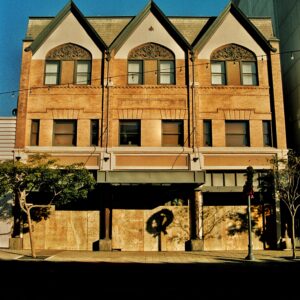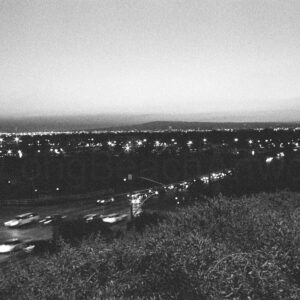In the summer of 1921, a thunderous roar split the quiet of Long Beach, California. On June 23rd, Union Oil’s Alamitos Number One well struck oil on Signal Hill—an event that would forever transform the city’s identity, economy, and skyline. What followed wasn’t just a discovery, but a frenzied oil rush that turned sleepy coastal Long Beach into one of the most dynamic boomtowns in America.
The Discovery That Changed Everything
Long before the gusher of 1921, there were whispers of oil beneath Long Beach soil. As early as 1898, attempts were made to reach it, but technology failed. Union Oil tried again in 1917, still coming up short. But by 1921, using new rotary drilling methods, they struck a gusher so powerful it ignited and sent rocks flying like a volcano. Witnesses described the sound like “a hundred jets taking off,” and the drama of the event woke entire neighborhoods, drawing crowds to see nature’s spectacle—and the promise of instant wealth.
A New Gold Rush
Signal Hill’s gusher was Long Beach’s gold rush moment. Oilmen, roughnecks, and fortune-seekers poured in from all over the country. Entire neighborhoods transformed overnight. Oil derricks dotted the skyline like forests of steel. Water lines, roads, and buildings were thrown up almost chaotically, as drilling moved full speed ahead—sometimes right in the middle of streets. Pipelines were laid without permits; land disputes were common; and nobody seemed to care who owned what as long as the black gold kept flowing.
Life Amid the Oil Boom
Residents of Signal Hill found themselves in the middle of chaos—and crude. Gushers were so common that oil rained on cars, laundry, pets, and homes. Children grew up to the lullaby of gas engines humming through the night. One man remembered how oil splattered his mother’s freshly washed clothes. Another told of white chickens turned black by raining oil. Yet, for many, the inconveniences were overshadowed by opportunity.
Drillers worked 12-hour shifts, seven days a week. In just 24 hours, wooden derricks would rise from empty lots. Accidents were common, fires frequent, and safety protocols practically nonexistent. Still, fortunes were made—and lost. Real estate boomed alongside oil. One man sold a lot for double what he paid, only to realize later it was surrounded by lucrative wells.
Political Fallout and Incorporation
As oil revenue surged, politics got complicated. Long Beach attempted to control drilling through taxes and zoning, prompting Signal Hill to incorporate in 1924 with a singular promise: no oil tax. That independence helped it avoid the fees imposed by Long Beach, securing prosperity for its 800 residents. The city had grown too fast to remain tame.
The Rise of “Hell’s Half-Acre”
With money on the line, legal boundaries were stretched—and often ignored. Enterprising drillers engaged in slant drilling, even illegally siphoning oil from beneath cemeteries and rival leases. The most notorious area, dubbed “Hell’s Half-Acre,” became a hotbed of illicit operations. Wildcatters hired crews on the cheap, paid in royalty shares rather than cash. These shares were traded like stocks, some even reaching inflated prices on the New York Stock Exchange.
Long Beach’s Transformation
The impact of the oil boom extended far beyond Signal Hill. Long Beach, once a quiet town of retirees and tourists, exploded in growth. By 1940, its population surpassed 160,000—more than all of Orange County. Oil funded a third of the city’s budget, spurred massive real estate growth, and built high-rise buildings, department stores, and infrastructure that made Long Beach a regional hub.
The city even owned valuable oil-rich land, such as Reservoir Hill. Incredibly, royalties from that single location repaid the city’s investment in just one month.
The Legacy of Black Gold
Despite its wild beginnings, the Signal Hill oil field became the most productive oil field in the world per acre. Its discovery altered the course of Long Beach’s history, bringing wealth, growth, and notoriety. Though the field is now largely developed, Alamitos Number One still pumps—a quiet nod to the well that once roared loud enough to wake a city.
The discovery of oil on Signal Hill is a tale of chaos, ambition, danger, and transformation. It’s a story of how one gusher reshaped an entire region, brought fortune to many (and heartbreak to some), and turned Long Beach into a powerhouse city. Today, while derricks have given way to neighborhoods and high-rises, the legacy of the boom is etched into every corner of the city.








